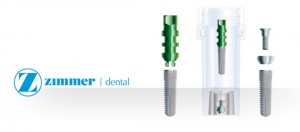
Dental implants are artificial tooth replacements that are used to counter tooth loss. The procedure is categorized as a form of prosthetic dentistry, although it also falls into the category of cosmetic dentistry as well.
Strong, durable and natural in appearance, Dental implants are among the most successful dental procedures performed.
Although you have a number of restorative options for the treatment of missing teeth, none have proven to be as functionally effective or durable as a dental implant. In many cases, dental implants may be the only logical choice for the restoration of all necessary functionality of the teeth and supporting structures.

Tooth Loss
- Teeth are lost or missing because of:
- Tooth decay
- Root canal failure
- Periodontitis (gum disease)
- Trauma to the mouth
- Excessive wear and tear
- Agenesis (refers to the failure of a tooth to develop during embryonic growth and development)
Some people who have lost teeth might feel too self-conscious to smile or talk. Additionally, biting irregularities caused by tooth loss can have a negative effect on eating habits and this can lead to secondary health problems like malnutrition. Regardless of the nature of problems related to tooth loss, dental implants may provide a simple remedy with proven results.
Advantages of Implant Dentistry
Implants offer a permanent solution to tooth loss. Additionally, Dental implants may be used in conjunction with other restorative procedures for maximum effectiveness. For example, a single implant can serve to support a crown replacing a single missing tooth. Implants can also be used to support a dental bridge for the replacement of multiple missing teeth, and can be used with dentures to increase stability and reduce gum tissue irritation.

More people than ever before are finding themselves as candidates for implant treatment. However, candidacy for implantation still varies, meaning that the dentist may determine that you should opt for an alternative restoration. Prosthodontists are the specialists who determine the best restorative solution for each individual patient.
Dental Implants can:
- Function and feel more like natural teeth than alternative solutions
- Help maintain bone and facial appearance
- Help preserve your healthy teeth
- Provide security and comfort while eating, speaking, working and socializing
- Create Confidence
The Dental Implant Procedure
Today’s dental implants are virtually indistinguishable from other teeth. This appearance is aided in part by the structural and functional connection between the dental implant and the living bone. Implants are typically placed in a single sitting but require a period of osseo-integration.

Osseointegration is the process by which direct anchorage of a dental implant root and the bone of the jaw. Osseointegrated implants are the most commonly used and successful type of dental implant. An osseointegrated implant takes anywhere from three to six months to anchor and heal, at which point the dentist can complete the procedure with the placement of a crown. Once the implant has anchored with the jawbone, artificial prosthesis may be attached and the process is done. If osseo-integration does not occur, the implant will fail.
Implant Treatment for fully Edentulous patients
Oral rehabilitation, using dental implants, in the fully edentulous patient who, for the previous several years has worn a total prosthesis, is a major challenge for the surgeon and the prosthodontist. The use of bone grafts, sinus elevation and transportation of the mentoneano nerve has made many patients reluctant to accept oral treatment due to the high expense involved and the prolonged time of the treatment. The potential disability resulting from the surgery, the possible risks and complications of the grafting procedures and the inability to use the prosthesis for extended periods of time causes many patients to believe that their dream of having a functional, fixed and aesthetic prosthesis is unobtainable. With the advent of the Nobel Guide technology many advantages are evident making oral treatment possible on patients, who before where not immediate candidates for dental implants. This technology allows for virtual surgery on the computer and a detail planning before the procedure is actually done on the real patient. Thanks to the software, the possibility of shortening the surgical time and a more precise procedure is a very attractive value add benefit for the professional and the patient. Many visible advantages must be considered when a case is planed: The quickness of the treatment; the low morbidity of the procedures; and, the lower cost involved due to the lack of costly reconstruction steps. The Nobel Guide software is a versatile tool for the treatment of the fully edentulous patient causing less nuisance because of the possibility of doing the surgery with local anesthesia and without flaps.
Considerations
For dental implant procedure to work, there must be enough bone in the jaw, and the bone has to be strong enough to hold and support the implant. If there is not enough bone, more may need to be added with a bone graft procedure. Sometimes, this procedure is called bone augmentation. In addition, natural teeth and supporting tissues, near where the implant will be placed, must be in good health.
In all cases, what must be addressed is the functional aspect of the final implant restoration. How much force is being placed on the bone implant interface? Implant loads from chewing and grinding can exceed the physical tolerance of the implant bone interface and/or the titanium material itself, causing failure. This can be failure of the implant itself (fracture) or bone loss, a “melting” or resorption of the surrounding bone.
The restorative dentist must first determine what type of prosthesis will be fabricated. Only then can the specific implant requirements including number, length and diameter be determined. In other words, the case must be reversed engineered by the restoring dentist prior to the surgery. If bone volume or density is inadequate, a bone graft procedure must be considered first. The restoring dentist consults with the oral surgeon, trained general dentist, or periodontist to co-treat the patient. Usually, physical models or impressions of the patient’s jawbones and teeth are made by the restorative dentist, and are used as physical aids to treatment planning.
Computer simulation software based on CAT scan data allows virtual implant surgical placement based on a barium impregnated prototype of the final prosthesis. This predicts vital anatomy, bone quality, implant characteristics, the need for bone grafting, and maximizing the implant bone surface area for the treatment case creating a high level of predictability. Computer CAD/CAM Dentistry milled or stereo lithography based drill guides can be developed for the implant surgeon to facilitate proper implant placement based on the final prosthesis occlusion and aesthetics.
Summary – Dental Implants can provide long term solutions to problems of tooth loss or decay and return your smile giving you greater self-esteem and aesthetics in your appearance. Also, dental implants can give you back confidence and comfort in chewing, will give the remaining teeth stability and will prevent undesirable movement, creating a more stable occlusion.
In ARTICA you´ll find a recognized prosthetics who are responsible for designing and preparing the Crown to carry the patient, which are manufactured under strict quality controls and standards in prestigious laboratories in the city.
More info about Dental Implants Medellín
PBX: (+57)6044484847
Whatsapp Messenger: +573216423818
Send Email: international@clinicaartica.com
